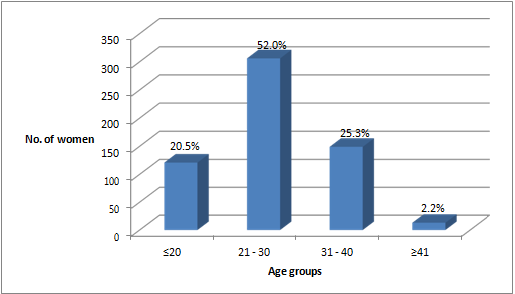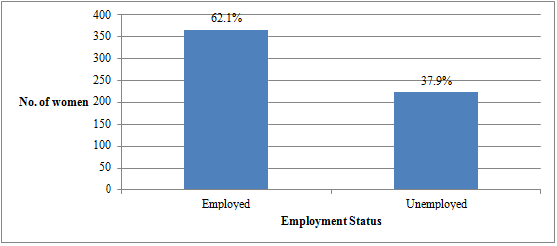INCIDENCE OF CANDIDACIES AMONG SINGLES AND MARRIED WOMEN OF DIFFERENT GROUP
ABSTRACT
In this work the incidence of candidacies was studied using selected patients of the University of Nigeria teaching hospital Enugu analyzed for the presence of candidacies yeast infection. The specimens were cultured on seaboards agar and blood agar and subculture isolated were C Albicans C Tropical C Knusei C Pseudoizo P cals C paraknusei and C stellatoides… (Scroll down for the link to get the Complete Chapter One to Five Project Material)

INTRODUCTION
Candida: This is a form of yeast-like fungi, several of which cause disease in man about 90% of infection is to Candida Albicans, which is normally present in the mouth, intestine, and veginal it is responsible for the infection in the sites defense mechanisms (carousal 1990). Candida abbacies usually appear as oval yeast-like a cell that reproduces by budding however in infected areas.
Filamentous hyphae plus pseudohyphae (which consist of elongated yeast cells that remain attached to each other many also be seen the yeast is easily grown at 250c 40 37 0c on sabouraudis glucose agar and if grown on cor a meal agar at 250c the organism can produce many characteristic thick-walled chlamydospore Van leeuweuhoed (2 000) candida Albicans is measured about 2.5 to 4.0 wm in diameter which can give rise to pseudomycellun, in the body it has no sexual form in poor medic at a temperature of 2b0c it produces thick wall and resting cells is about 7 to 17 m in test positive in maminaliam serum it has the ability to split urear.
It is pathogenic to rabbits. guinea Pig s and with where it causes abscesses in the kidney when giving intran Veroush (Eleke, 2002). Oral candidacies also called oral thrush) occurs and most frequently in the newborn and is probably acquired during passage through an infected vagina the yeast appears as a creamy grade membrane covering the tongue and appears able to produce disease only because of the absence of their resident normal flora (Prescott et al; 1994) if thrush has not occurred by the 3rd day of life it is likely that it will appear but it should occur which will usually disappear without treatment as other members of the normal flora are acquired.
Oral thrush in order children or Adults may occur as a result of endocrine disturbance or ceutaninosis (Particularity a deficiency of rib flauin as a complication of diabeta, as a result of poor oral hyepene or following the administration of corticosteroids or autibutics oral thrush also occur in bottle feed infants which the magnification of my white patches cowering redraw areas of mucous manbrance vanities, vagines cendiass is seen most frequents in women with diabetes, milieus deny pregnamai or following prolonged antibiotic therapy… (Scroll down for the link to get the Complete Chapter One to Five Project Material)
Statement of the Problem
Candidiasis has caused a lot of problems in our societies these days because of has the nature of the disease look like such as the discomfort it causes to people like itching which causes a lot of embracement to people publicly… (Scroll down for the link to get the Complete Chapter One to Five Project Material)
Research Objectives
- To determine the prevalence of fungal infection among the patients of UNTH Enugu
- To determine the prevalence of fungal infection among single and married women of different age group patients… (Scroll down for the link to get the Complete Chapter One to Five Project Material)

LITERATURE REVIEW
- Vulvovaginal Candidiasis
Vulvovaginal candidiasis is an infection caused by a number of pathogens in the Genus Candida. These species are Candida albicans (accounting for about 80 to 90%), candida glabrata (10%), Candida tropicalis, Candida krusei, and Candida parapsilosis (Mohanty et al., 2007; Sobel, 1997). The infection is characterized by a curd-like discharge, itching, and erythema.
Vaginal Candida colonization is known to increase during pregnancy. The reason for this is thought to be due to increased estrogen levels, glycogen, and other substrates in the vagina (Sobel, 2007). Increased level of Candida spp may cause an imbalance in the normal flora of the vaginal, thereby decreasing lactobacillus dominance (Cassone, 2015; Jefferson, 2012).
- Prevalence of Candidiasis
The infection is very prevalent in women and especially pregnant women are more at risk. Even though Candida spp causes Vulvovaginal candidiasis, it is asymptomatic in about 20 to 30% of women and part of their normal flora. Approximately, 75% of healthy women develop VVC at least once during their reproductive age (Fidel, 2004; Sobel, 2007).
Several studies around the world have shown VVC infection range between 10.0 to 55.0% (Ahmad & Khan, 2009; Mohanty et al., 2007; Okonkwo & Umeanaeto, 2010; Olowe et al., 2014)… (Scroll down for the link to get the Complete Chapter One to Five Project Material) Diagnosis of Candidiasis
- Microscopy
Microscopic examination of vaginal secretions by a process called wet preparation is the cheapest and easiest way to diagnose candidiasis. A drop of saline is added to the vaginal secretions and observed under the light microscope for yeast cells. Phase contrast and polarized light microscope make it easier to observe details.
- Culture
The use of culture is the most commonly accepted method for diagnosing candidiasis. Sabouraud dextrose agar (usually containing cycloheximide to inhibit the overgrowth of unrelated mold species) is the most appropriate media for samples collected from the vaginal fornix (Nyirjesy et al., 1995). Vaginal swab samples can be transported to the laboratory using Amies transport medium before a culture is done. It is incubated at 36oC for 48 to 72hrs or two weeks when left on at room temperature… (Scroll down for the link to get the Complete Chapter One to Five Project Material)
Mixed infections/co-infections
Mixed infection as defined by Sobel et al is the concurrent presence of two or more potential pathogens in the lower genital tract, irrespective of the clinical significance of the individual pathogens (Sobel et al., 2013). Mixed infections are usually the coexistence of two or more endogenous infections (BV and VVC) and sexually transmitted infections (C. trachomatis and N. gonorrhoeae,, T. vaginalis and HSV).
The coexistence of vaginal infections (BV, VVC, and TV) is less documented but few studies have demonstrated that co-infections in this organism are common (Gatski, Martin, Clark, et al., 2011; Gatski, Martin, Levison, et al., 2011; Moodley et al., 2002; Rivers et al., 2011)… (Scroll down for the link to get the Complete Chapter One to Five Project Material)

RESEARCH METHODS
- Sampling and Sample Size Calculation
The sample size was calculated with a prevalence of 6.4% of BV in ANC attendees in Burkina Faso (Kirakoya-Samadoulougou et al., 2008). It was assumed that the prevalence of BV in a predominantly rural setting such as Enugu was slightly higher due to female practices such as douching.
- Using STATA Statistical software version 12 for the calculation (Stata Corp, TX USA):
The estimated sample size for one-sample comparison of proportion to hypothesized value Test Ho: p = 0.0640, where p is the proportion in the population
Assumptions:
alpha = 0.0500 (two-sided) power = 0.9000
alternative p = 0.1000
(Scroll down for the link to get the Complete Chapter One to Five Project Material)
- Study design
The study utilized a cross-sectional design to recruit pregnant women over a seven (7) months period, from September 2014 to March 2015 to determine the prevalence of BV, candidiasis, and Trichomoniasis.
- Study Population
The study consented and recruited 589 pregnant women. No age limits were set and pregnant women of all gestational ages who visited the antenatal clinic (ANC) of the University teaching hospital Enugu for routine care or for treatments of any ailments were eligible for enrolment into the study… (Scroll down for the link to get the Complete Chapter One to Five Project Material)
RESEARCH FINDINGS AND DISCUSSION
Demographic characteristics of the study population
- Age distribution
The age of pregnant women ranged from 12 to 54 years. The age group with the highest number of women was 21-30 (52.0%, 306/589) whiles the least was 41 and above (2.2%, 13/589).
Figure 1.0 Age distribution of pregnant women

- Marital Status
Among the 589 pregnant women interviewed, more than half 68.6% (404/589) were married. There were 16.5% (97/589) single women while 15.0% (88/589) were cohabiting (Not bound by any matrimonial contract but lives as couples).

Figure 2.0 Marital Status of pregnant women
- Employment Status
The majority of the participants 62.1% (366/589) were employed (Skilled, unskilled or professional work) whiles the minority 37.9% (233/589) were unemployed.

Figure 3.0 Employment status of pregnant women
(Scroll down for the link to get the Complete Chapter One to Five Project Material)
Discussion
The prevalence rate of BV reported in this study was 30.9%. In comparison with other similar studies, which enrolled pregnant women and using the same diagnostic method (Nugent criteria), the results from this study were considered to be higher but also lower in some others.
The 30.9% BV prevalence rate found in this study was much lower than 64.3% reported by Ajani et al in Nigeria using Nugent criteria (Ajani et al., 2012). However, a relatively much lower rate of 6.4% was reported in a large population-based study in neighboring Burkina Faso in pregnant women attending ANC (Kirakoya-Samadoulougou et al., 2008).
The study related the low rate of BV to the low national prevalence of HVS-2, vaginal hygiene practices, and sexual behavior of the study population. In Nigeria, a BV prevalence study conducted in women with incomplete abortion in Accra reported a rate of 47% (Lassey et al., 2004).
The high rate might be due to the selection of women with an incomplete abortion. Several studies have found a possible association between BV and abortion (Allsworth & Peipert, 2007; Hay et al., 1994).
Kirakoya-Samadoulougou et al. (2008). Ralph et al., a cohort study of women undergoing in vitro fertilization, found an association between BV and an increased risk of miscarriage in the first trimester (OR=2.67, 95% CI=1.26 to 5.63) (Ralph et al., 1999)… (Scroll down for the link to get the Complete Chapter One to Five Project Material)
Conclusion
The study area had a very high prevalence of vaginal infections among pregnant women especially VVC and BV. VVC was the most predominant (36.5%, 215/589) vaginal infection followed by BV (30.9%, 182/589) and the least was TV (1.4%, 8/589).
The study shows that pruritus as a key symptom in VVC infection and this should be considered during clinical diagnosis alongside laboratory confirmation. However, dysuria, lower abdominal pain, and vaginal discharge were not associated with VVC and are therefore unspecific… (Scroll down for the link to get the Complete Chapter One to Five Project Material)
Recommendation
In view of the high prevalence of vaginal infections, pregnant women attending antenatal clinics should have prompt and adequate investigations with appropriate treatment to prevent the adverse effects of the infection on mother and fetus.
In addition, a comprehensive program on reproductive healthcare education with the aim of reducing vaginal infection prevalence should be put in place… (Scroll down for the link to get the Complete Chapter One to Five Project Material)

REFERENCES
Achkar, J. M., & Fries, B. C. (2010). Candida infections of the genitourinary tract. Clinical microbiology reviews, 23(2), 253-273. doi: 10.1128/CMR.00076-09
Adu-Sarkodie, Y., Opoku, B. K., Danso, K. A., Weiss, H. A., & Mabey, D. (2004). Comparison of latex agglutination, wet preparation, and culture for the detection of Trichomonas vaginalis. Sexually transmitted infections, 80(3), 201-203.
Agyarko-Poku, T. (2011). Aetiological agents of infective vaginal discharge among women attending a STD clinic in Kumasi, Nigeria. Sexually transmitted infections, 87(Suppl 1), A305-A305.
Ahmad, A., & Khan, A. U. (2009). Prevalence of Candida species and potential risk factors for vulvovaginal candidiasis in Aligarh, India. European journal of obstetrics, gynecology, and reproductive biology, 144(1), 68-71. doi: 10.1016/j.ejogrb.2008.12.020. (Candidacies)(Candidacies)(Candidacies)(Candidacies)(Candidacies)
Ajani, G., Oduyebo, O., Haruna, M., & Elikwu, C. (2012). Nugent Scores of Pregnant Women in a Tertiary Institution in Nigeria. (Candidacies)(Candidacies)(Candidacies)(Candidacies)(Candidacies)(Candidacies)(Candidacies)
Akah, P., Nnamani, C., & Nnamani, P. (2010). Prevalence and treatment outcome of vulvovaginal candidiasis in pregnancy in a rural community in Enugu State, Nigeria. (Candidacies)(Candidacies)(Candidacies)
Akerele, J., Abhulimen, P., & Okonofua, F. (2002). Prevalence of asymptomatic genital infection among pregnant women in Benin City, Nigeria. African journal of reproductive health, 93-97. (Candidacies)(Candidacies)
Akinbiyi, A., Watson, R., & Feyi-Waboso, P. (2008). Prevalence of Candida albicans and bacterial vaginosis in asymptomatic pregnant women in South Yorkshire, United Kingdom. Archives of gynecology and obstetrics, 278(5), 463-466. (Candidacies)(Candidacies)(Candidacies)(Candidacies)(Candidacies)(Candidacies)(Candidacies)
(Scroll down for the link to get the Complete Chapter One to Five Project Material)

